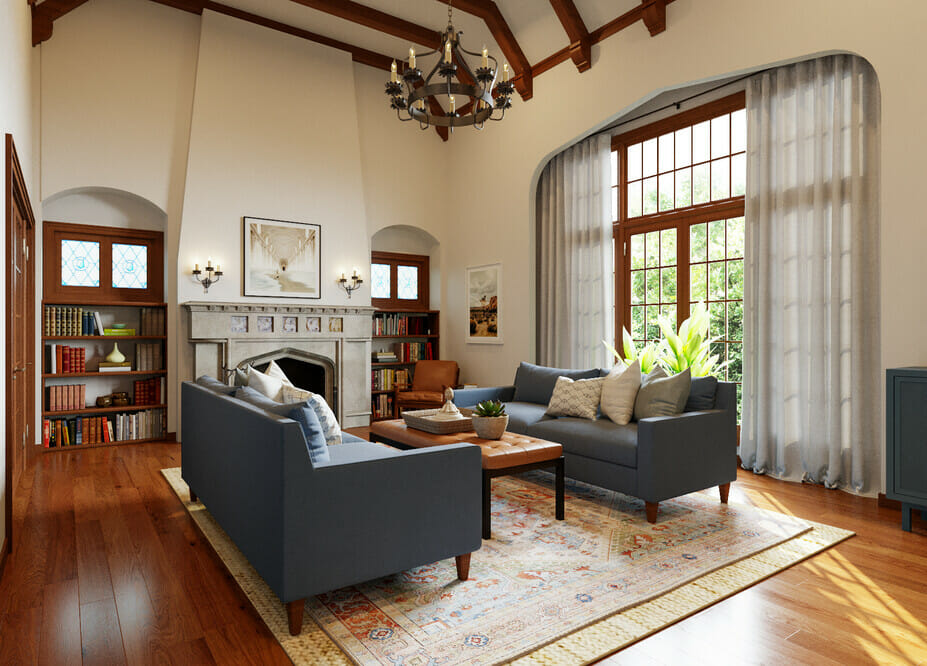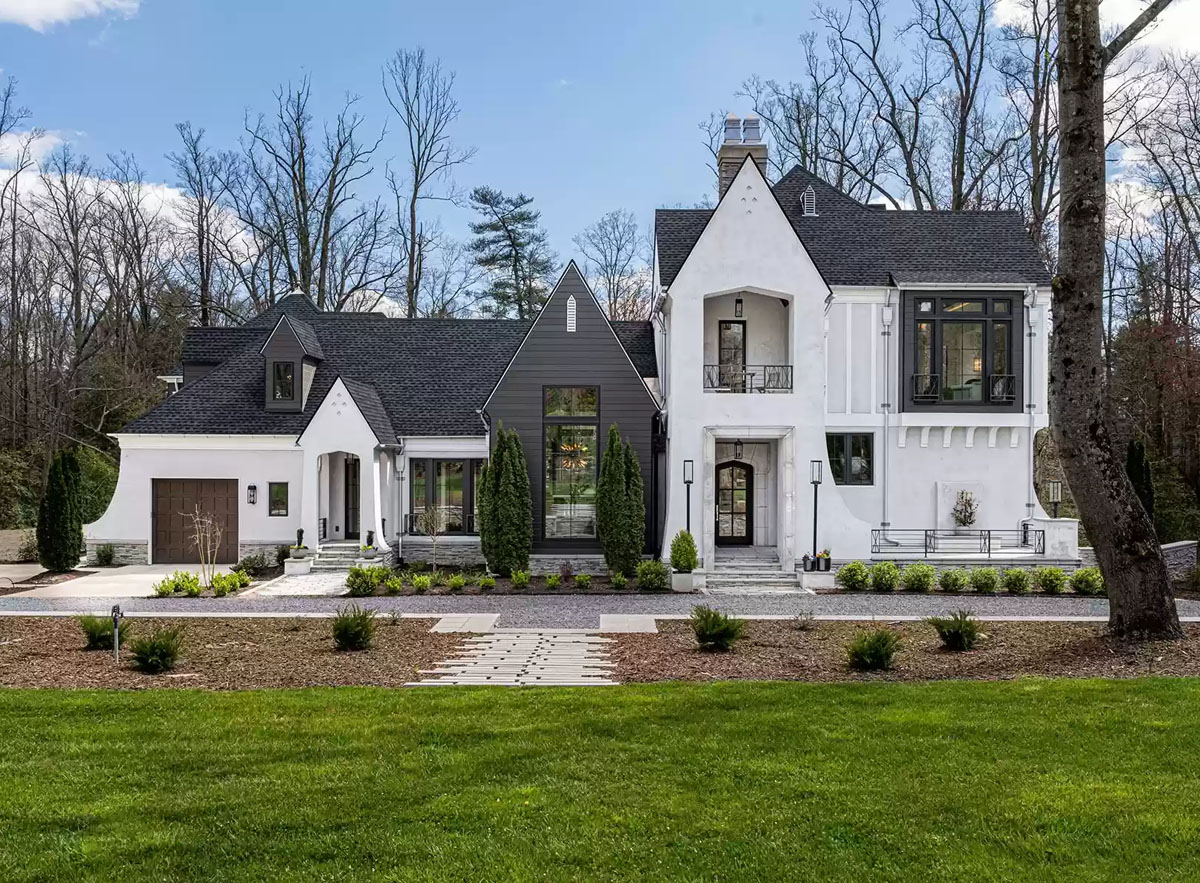Table Of Content

During the reign of Henry VIII, and Elizabeth I, English domestic architecture and interior decorations bloomed. The economy flourished and people ventured to build creative, more sophisticated homes in tune with their surroundings and their preferences, thus came Tudor-style houses. Tudor-style homes are in vogue, and the customization options you can harness are unlimited, so why wait?
Medieval Revival
Crank up your design game up a notch by including immaculate details in the upholsteries. Choose these patterns in your upholsteries and hyper-personalize the design – traditional prints of gingham, plaid, ticking stripe, chintz, floral damask, suzani and twill patterns. Go for rosh bushes, fresh herb gardens, delphiniciums, box hedging and install large planters to give an authentic English country-home vibe. If your client has bought a lovely piece of land in the country, blanketed by greenery, and wants to build a dream home that’ll stand the test of time, and be an iconic statement in itself, you should consider making a Tudor-style home. Building a Tudor house can be a complex and costly process, and it’s important to carefully plan and allocate resources in order to ensure a successful and financially viable project.

Hall Paint Color
This leaded-glass, diamond-pattern window capped by an antique timber lends the home a well-aged feel. While the tall, narrow windows of yesteryears remain a signature element, they now benefit from energy-efficient glazing and broader design variations. Furthermore, today’s contemporary Tudor homes often showcase luxurious modern amenities, including state-of-the-art kitchens, spa-inspired bathrooms, and advanced home automation systems. Architect Ken Ungar, whose portfolio largely features high-end modern farmhouse-style residences, will design a home for the couple, Architectural Digest reported.
Renaissance Details
Step Inside the Pasadena Showcase House of Design 2024 - Architectural Digest
Step Inside the Pasadena Showcase House of Design 2024.
Posted: Wed, 24 Apr 2024 20:29:52 GMT [source]
The walls and ceilings are typically a white or light-colored plaster which contrast the detailed ceiling beams. Designers Frank Slesinski and Serena Brosio collaborated on the charming living room in the Gatehouse. “One of the main things we did was add a window seat, which looks like it should always have been here,” Slesinski says.
Tudor style houses, also called Tudor Revival or Mock Tudor, are two-to-three-story homes with brick exteriors featuring large portions of white stucco and decorative half-timbering. These homes have a romantic and slight medieval appearance, making them a truly unique home style. A palette of whites, deep blues, and gold creates an elegant atmosphere in the formal living room, which was designed by Rachel Duarte. The designer established two seating areas within the space, including a cozy gathering spot with chaise longues that flank the original carved marble fireplace.
Grey Kitchen Paint Colors.

As the mid-19th century rolled around, Tudor revival architecture rose in popularity as wealthier homeowners built new homes with the Tudor style in mind. Elizabethan connotes the “golden era” of the reign of Queen Elizabeth I [1558–1603], the time of Shakespeare and the English Renaissance. Our style designation “Tudor” is often assumed to include this period’s influence. Jacobethan is a word coined in the 1930s to refer to “baronial” English Revival architecture that combined elements from the Elizabethan and Jacobean periods.. Designer Stephanie Hatten updated the Gatehouse Kitchen, turning it into an airy English-country-inspired space.
Wall Paint Color
The kitchen opens directly to a very comfy and stylish family room/lounge area. This extraordinary kitchen features a custom range hood and open shelving in aged brass and zinc finishes. The overall warmth of the color tones and interiors create a classy but family-friendly feel. Tudor architecture continued to pop up in villages throughout England until Elizabethan-Tudor architecture took over after 1558. It wasn't until centuries later that the design style was reborn in the United States. Lastly, just set the shot and let the AI create stunning 4K renders for you in less than 10 minutes.
At 7,836 square feet, with an attached two-level four-car garage plus detached ten-car garage, this home is the epitome of luxury living. Inside, the intelligent floor plan is ideal for family leisure and large gatherings – offering formal and informal spaces that open to the beauty of the exterior grounds with lush landscaping and an outdoor kitchen. They maintained the steep rooflines, gabled windows, and arched doorways of English Tudor houses, while stucco and brick facade replaced daub and masonry, and thatch gave way to slate roofing. Similarly, dark wood trim and faux timbers substituted for traditional heavy timber construction, as this new Tudor-style house was built using modern wood-framing methods. The infusion of modern elements into the classic Tudor style, complemented by a pristine white exterior, creates a striking visual impact that is both timeless and contemporary.
Interior Design Ideas: Colorful Interiors.
What Is a Tudor Home? - Apartment Therapy
What Is a Tudor Home?.
Posted: Tue, 06 Feb 2024 08:00:00 GMT [source]
Great architecture often embraces its surroundings, but with this Tudor-style home, the formula is flipped. The stately home is embraced by its surroundings, with lovely lakeshore curving around the site on three sides. A slate-tile roof and diamond-shaped offset chimneys distinguish the home's facade. The path passes through a flower-covered arbor and leads to an arched entrance. Patterned brickwork combined with black half-timbering adds visual interest to the home's facade. Each and every home style has its pros and cons – and it all depends on your needs as a homeowner.
Half-timbering is present on most Tudor homes, along with tall narrow windows in multiple groups and with grilled glazing. Heavy chimneys and steeply pitched roofs give Tudor-style homes medieval flavor. The windows of this home include a lot of casements, another characteristic of the style. It was inspired by the traditional architecture of a nearby school and estate.
“For the wall mural, I had to pick something to bring them into nature and a calming environment,” Lalikian says. Designer Mark Hermogeno paid tribute to Silver Queen Susanna Bransford Emery-Holmes in the kitchen, butler’s pantry, family room, powder room, and mudroom. “We had thought, What if she actually came back to life and asked us to remodel the space? “We wanted to concentrate on polished nickels and polished chromes to get that silver feel back in,” he says of the fixtures, hardware, and lighting by Kohler and Kallista. Hermogeno and designer Lynette Chin brought in a mix of vintage and new furnishings in the family room, incorporating performance fabrics for durability. “[We made] sure that it was a really usable room, that it didn’t just look nice,” Hermogeno says.
This led to the style fizzling out after World War II, when the country turned its attention to focus on new, affordable housing developments that could be built quickly. During the height of the colonial revival period (1910–1940), "this style comprised 25 percent of the suburban houses built," Pennoyer says. The unique style is still an appealing option for some buyers who want to own a historic home as it has proven to be worth the investment once the time and budget are spent reviving the structure.
Last year, the couple purchased the 1950 Zimmerman house, designed by the architect Craig Ellwood, in Los Angeles’s Brentwood neighborhood for $12.5m. The residence, with landscaping by Garrett Eckbo – who has been described as the pioneer of modern landscaping – had previously been featured in Progressive Architecture magazine. One of eight houses designed by Lewis Bowman for a 1920s Bronxville, N.Y., subdivision, this one has an irrregular plan and Tudor-style half-timbering and prominent chimney. “I’m all about gardens connecting the architecture into the landscape,” landscape architect Timothy John Palcic tells AD PRO.
No comments:
Post a Comment